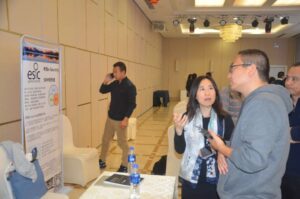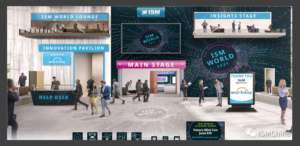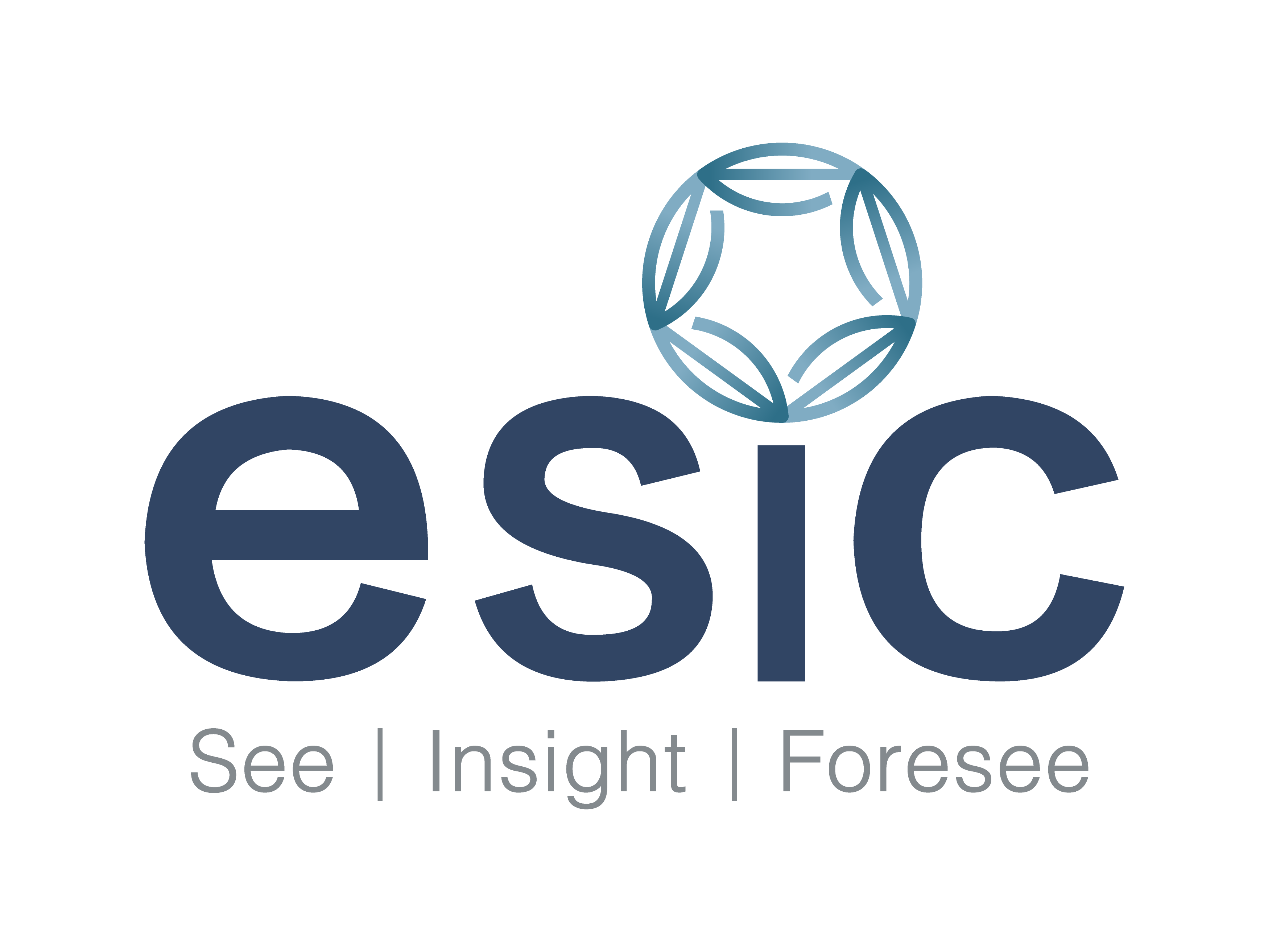
(While compiling this article, I relive this global speech with Tony, Roman and Frank, and I have gained new harvest and am deeply encouraged. I hope our sharing can bring some light and encouragement to companies and individuals struggling with digital transformation. There is beauty in the struggle …” Cheer with you! Jenny)
This is the third article shared by ISMChina in the China Supply Management Digital Transformation Research project, ISM World Global Summit. In the last two articles, we shared the main thrust of the project and the first part of the summit speech – Digital transformation survey report.
In this article, we will review the interview part of the speech and approach two successful digital enterprises, multinational enterprises – Schneider and local new energy vehicle enterprises – NIO. Roman Wang, Vice President of Schneider Electric, and Frank Ma, Senior Director of Supply Chain Quality at NIO, share their experiences and insights on digital transformation. Finally, I, Jenny Chen, CEO of ESiC, would like to share with you my transformation story from traditional sourcing to SRM software system designer, and my vision for the future of digital sourcing.
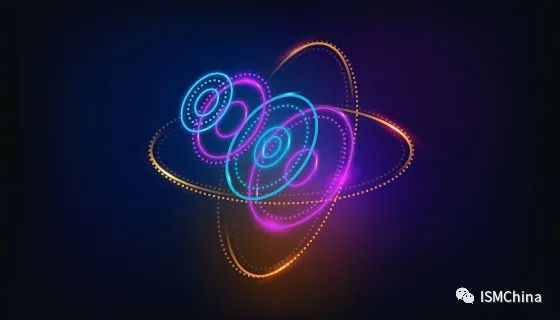
Roman: Schneider – Committed to building the most agile, innovative, planet – customer oriented supply chain
Roman begins by explaining the overall state of Schneider Electric’s digital transformation: “Schneider Electric is a French company with a long history of more than 180 years, but we are still young in our way of thinking, especially when it comes to digital transformation. Schneider challenges itself strategically by launching a new transformation project almost every three years. Schneider Electric is known as an expert in energy management and industrial automation, and we are also active in providing our customers with more efficient, energy efficient and sustainable solutions through digitalization.”
Here we share with you the strategic transformation of Schneider Electric’s global supply chain over the past 16 years, with lean manufacturing as the most solid foundation. In addition to lean production, lean concepts are also covered throughout the supply chain, including procurement. We first STRIVE to customize the supply chain, then strive for TSC4.0 until 2021. Strive is formed by putting together the first letter of six keywords, which are: Sustainable Sustainable, Trusted, Resilient, Intelligent, Velocity & Efficiency. To this end, we have created five supply chain models to serve customers with 17 different purchasing behaviors.
In Intelligent, we use digitalization to predict, prevent, and automate, while maintaining a high degree of flexibility and remotely coordinating end-to-end supply chains. Intelligent has three pillars: autonomous supply chain, intelligent operations powered by EcoStruxure, and end-to-end collaboration.
Too much wording can be weak, but the key message is that we are able to achieve end-to-end management and provide the best service to our customers. Schneider Electric’s rise from 11th to 4th in Gartner’s global Supply chain rankings over the past three years is a great validation that our digital transformation is moving in the right direction. “
Frank: NIO – born to be a digital company
Then Frank described NIO as a young enterprise: “NIO is very young, only 6 years of history, our founder Li Bin from a multinational enterprise. Nio is not only a car company, we develop and manufacture high-end high-quality intelligent new energy vehicles, our philosophy is to shape a better mobile life for our users through humanized design, meticulous service and cutting-edge technology.
Nio’s IT department, which we call DD, specifically leads digital. Digitalization is reflected in our products and operations. With the new cars we’ve launched, the ES8, ES6, and EC6 SUVs, and the ET7 coming in the first quarter of next year, we’re very focused on helping to enhance the user experience through digitalization in our products.
There is a small robot named NOMI in the NiO car, and NOMI has been downloaded 70 million times and processed 60 million voice commands. One heartwarming story I heard users share on NIO Day: After the cat Golden passed away, the family no longer had the chance to call the name Golden, until one day, after her husband named the NOMI of NIO car Golden, the female owner heard NOMI say “Hello, I’m Golden, I’m back.” “Suddenly tears, this is really a special experience brought by technology – small robots to users.”
Nio Smart electric vehicles can be quickly upgraded through FOTA software. FOTA refers to upgrading firmware over the air, just like you can upgrade your phone’s firmware over a 5G or Wi-Fi network without any physical wire connection. Over the past two years, we have produced more than 39 versions of FOTA for our users, including the optimization of 280 key functions for ADAS, body control and infotainment. FOTA offers up to 130 new additional features for NIO users.
Our next product, the ET7, the flagship sedan, has just won this year’s Red Dot Design Award. Similarly, the current smart electric car is more like a digital computer than a traditional car. Equipped with the most advanced Qualcomm®Snapdragon™ automotive cockpit platform, the ET7 features the most powerful in-vehicle mobile connectivity and communication capabilities, including 5G, V2X, Bluetooth 5.2, Wi-Fi 6, and ultra-Wideband for seamless connectivity with high bandwidth and low latency. The vehicle is also equipped with the Aquila super-sensing feature, which includes 33 high-performance sensing units: an ultra-long range high-resolution Lidar, 18 million high-resolution cameras, 5 millimeter-wave radar,12 ultrasonic sensors, high-precision positioning units and V2X. It redefines the standard for autonomous driving sensing systems in production vehicles. In short, our vision is to make the car a safe and free mobile living space.
Through self-developed sensing algorithms, positioning, control strategies and platform software, NIO has built a full-stack autonomous driving capability called NAD. NAD will gradually cover highways, urban areas, parking lots and power stations, enabling A safer and easier automated driving experience from point A to point B.
At present, NIO is building its next general manufacturing base in Hefei, China. In addition to using the digital online SRM system as our supply chain partner portal, we will also use the digital incoming parts quality data to improve the efficiency of our factory quality center and provide various data transmission interfaces to the supply chain partner website. Once the system is built, the dimensional engineers at our fit center can easily obtain the measurement data of the relevant parts and conduct the fit performance study of the corresponding area. As another example, the paint color measurement data of the exterior parts partner is passed to the NIO paint shop before the part is shipped, enabling the paint shop to select the best matching batch of the body to improve the color matching effect of the body.
Speaking of challenges, since the third quarter of last year, Oems around the world have been facing a severe “chip shortage” problem, and I believe the media has reported the relevant reasons behind this. On March 19, a fire broke out at the Renesas Japan Nuclear Power plant. In fact, the N3 fab mainly produces automotive-grade wafers. In the clean room, 23 pieces of equipment were damaged, two-thirds of which were used for automotive chip production. It will take months to resume production there, and the fire could deal another major blow to the global auto industry,
Renesas N3 Fab produces 12-inch wafers from 40 nm to 90 nm, primarily for automotive grade MCU chipsets. Such as the famous 850 series.
In general, a traditional car requires about 300 to 500 integrated circuits, while smart electric vehicles like NIO require about 800 to 1,000 integrated circuits per vehicle, and for L4 autonomous vehicles, this number may double. As you may know, unlike consumer or industrial applications, the semiconductors used in the automotive industry account for only a small fraction of the total semiconductor volume, about 10%. However, our requirements for automotive-grade integrated circuits are very high. Not to mention long lead times for special durability qualification testing of AEC-Q100 vehicles and strict quality requirements/process control in single-digit PPM as well as MSA, process capability analysis file submission, etc… . Compared to consumer or industrial grade components, automotive grade components are afraid of any type of change. Before a replacement chip is installed in a car that is already in the market, it must be fully verified/bench tested/road tested /FOTA verified, etc.
Typically, it takes months to replace an automotive chipset. If you replace the MCU with embedded software, it will take longer, which is the main challenge we are currently facing in the digitalization process of the car.
The good news is that we see the relevant government departments and IC manufacturing plants are working together to increase the production capacity of automotive IC, and hopefully the situation will improve in the second half of this year. This is a brief introduction to NIO, thank you. “

After a brief session with Roman and Frank, we have a fascinating Q&A session.
Jenny: Traditional enterprises are faced with many challenges of digital transformation, such as difficult to change the inherent way of thinking, digital subversion of the existing business model makes it difficult for the team to adapt, and the past successful experience and practice are abandoned. Schneider is a traditional manufacturing industry with a long history, is it facing similar challenges in digital transformation, and how to deal with this challenge?
Roman: Totally agree with you Jenny. Sometimes, proud historical experience and mindset can be a major obstacle in the digital transformation process of traditional companies.
I only really got into digital when I joined Schneider Electric about four years ago. Before joining Schneider Electric, I was frankly a layman who knew very little about digitization. However, over the past four years, I have been able to devote myself fully to the transformation of the company. One important point is that Schneider Electric’s digital transformation is not only a top-down demand, but also a lot of bottom-up initiatives. The windmill of a company’s digital transformation is turning as planned, and people are becoming more responsive. For example, two months ago, as one of the judges for our company’s digital competition, I witnessed the incredible pace of development of hundreds of wonderful digital ideas in every factory. In other words, employees are no longer passive passengers, but active digital drivers.
Jenny: “Different from Schneider, NIO is a young car company, born in the digital era. Shen Fengzong (executive vice president of NIO) corrected me in an interview and said: “NIO does not have the problem of digital transformation, digital is our genes.” While this sentence impressed me, it also made me curious about NIO’s digital practice. Compared with traditional car companies, what difference does NIO’s digitalization bring?”
Frank: “I completely agree with Mr. Shen’s view that digitalization is the gene of WEilai.” I remember Bill Gates describing digital transformation as a process of bringing people, data and processes together to create customer value.”
At NIO, we digitally create user profiles and provide personalized services to users. For example, when a traditional car user wants to report a problem, he may need to call the 400 service number and provide a lot of information about his car, (make, model, trim level, etc…). It usually takes weeks or even months to get feedback from the OEM through the dealer.
For NIO users, all he has to say is “Hi Nomi, I want to report a problem…” The relevant user and vehicle information is then immediately transmitted to the service center within a few seconds and fed back to the user within 24 hours by NIO Apps or its partners, and we can also provide the user with DOTA(i.e. vehicle aerial diagnosis) service.
For employees, digital technology can be used to build tools that improve their efficiency and productivity, and more importantly, enhance our work experience at the same time. As far as the business itself is concerned, digital transformation can shorten the business response time, create higher market value and reduce costs through the means of forecasting and analysis, such as the digital information transmission system of NIO factory.
Jenny: “At a time when most businesses believe that digital transformation is driven primarily by efficiency gains, at Schneider we see a different perspective – bringing value to our customers. In the interview, I felt that the seemingly empty slogan of bringing value to customers is actually driving the digital transformation of Schneider’s factories in China. Roman, how does customer value drive the digital transformation of Schneider’s factories in China?”
Roman: In the STRIVE strategy mentioned earlier, we also strive for efficiency, but the key point and ultimate goal is: how to serve our customers better! As I said before, we set up five supply chain modules to serve 17 customer segments, and the heart and essence of the transformation is the end-to-end concept: from downstream to upstream. We really need to always think from the customer’s point of view.
By analyzing the entire value stream, we can identify more opportunities and truly optimize lean processes across the entire supply chain. Otherwise, there will be a waste of overlapping resources and processes. Just like inventory management, if we can gain insight from the customer to the supplier side, we can identify risks ahead of time and take action to set the right inventory levels for the entire supply chain. For example, another case, one of the activities we do: the traditional supplier quality inspection model, including process inspection and final inspection. At the same time of receiving the goods, the customer also carries out incoming inspection. What’s the added value behind that? It doesn’t! By deploying digital connections with suppliers and certifying field inspectors, we can skip incoming inspection altogether. For some suppliers, EDI allows us to identify quality risks in advance through data analysis. It’s a classic case of win-win.
Jenny: According to our survey, the lack of digital talent is one of the major barriers to digital transformation. Born in the digital age, does NiO also find it difficult to find digital talent? How do you find, retain and develop digital talent?
Frank: “Yes. In the digital age, we are not only in the competition of products, but also in the competition of talents. At NIO, we have our own “NIO way”. Internally, we have a strong human resources system behind us, not to mention a well-developed succession plan. At the same time, campus recruitment and the SPARKS program (training for new employees) continue to attract the best talent from around the world.
It is worth mentioning that our self-developed OKR performance management system is mature enough to support our success. And our NIO Academy and e online learning systems are very popular.
Externally, NIO TA is led by one of the largest Internet companies in China, we focus on digital experts, we are open to absorbing talent from across the ecosystem, and strive to be the best benchmark in our industry.
Nio has developed an online learning system in cooperation with the United States Borais Group and the United States Yaya Group to help NIO talent grow rapidly. The system provides more learning opportunities for supply chain management teams that travel more frequently.
As a result, my supply chain quality team has received the highest rating in the history of the Chinese automotive industry. Regarding AiAG’s 5 core quality tools online assessment, our team’s results have also become the benchmark in the industry. “
Jenny: “I remember in the interview, Roman, you were very proud of the enthusiasm and creativity of the people at the bottom of Schneider’s factory in China, and the fact that these digital practices are not only really beneficial, but are also being rolled out globally. How do you foster and inspire a digital culture in Schneider China? “
Roman: “Digital talent with strong business awareness and knowledge is very important. Talent is not easy to find in the market, especially for large companies, and new hires generally take 3-6 months to adjust to the environment. At Schneider Electric, every year we have on-campus recruitment from top schools in China and abroad. At the same time, we cultivate a lot of digital talent ourselves. We digitally evaluate every job position, from top level to engineer and technician level. Identify gaps and then offer customized training courses to improve. At the same time, we have created different communities by region and function, such as: RPA, BI, AI, data science, etc. Each year, according to the company strategy, we identify the key projects in the annual award program. We also partner with top consulting firms and sharp startups to have a fresh perspective from the outside in, ensuring we stay ahead of the digital transformation of the market.”
Tony: “Roman, Frank, from the perspective of your respective companies, what are the three most critical factors for successful digital transformation? “
Roman: “Digital architecture and quality, people capability, company culture. “
Frank: “In my opinion, the first is creating user value, the second is people’s awareness and willingness, and the third is the process.
Why do we need digital transformation? Because our goal is to create value for our users. At NIO, our mission is to create a happy lifestyle for our users.
Digital transformation is about how NIOer delivers on our vision. For our people, first they need to see the reasons for change, open their minds, and then we can improve skills through tools and data. It’s not as easy as buying a piece of software, but it requires the entire company to think like a technology company.
In the end, process is fundamental to making things happen. We use it at the same time, simplify it, let it stimulate people’s potential, liberate people’s productivity. “
Tony: Jenny, I know you are familiar with the theory and practice of procurement, and through consulting, training and coaching, you help enterprises achieve effective procurement management. Five years ago, you gradually moved into the design and implementation of SRM procurement software systems, and now the SRM system of Fengshi has also stood out in the industry and successfully served a number of customers. My question is, what drives you from sourcing to designing and implementing digital software systems? “
Jenny: “I think it is the love for purchasing and the sympathy for the purchasing work.” For enterprises, procurement is a very valuable work, but the fact that procurement work is not valued, there is no sense of accomplishment, this value is often ignored. Purchasing manages 60-90% of the company’s expenditures and manages the company’s important external resource – suppliers. In today’s increasingly demanding products, the collaboration of the supply chain has become more and more critical, and the ability of suppliers largely determines the competitiveness of enterprises in terms of technology, cost, quality, flexibility and response speed.
When I was still working at Nokia, I could buy with ease and confidence; But now the world around us is completely different, becoming faster and faster, long-term procurement and supply uncertainty coexist, long lead times, price increases, global shortages are the norm; The already busy shopping just got busier.
With the help of digitalization, I hope to help procurement work more calmly and confidently, so that the value of procurement to the competitiveness of enterprises can be fully brought into play. I hope to use the theory and value contribution of procurement as the underlying logic through the software system, and transparently show the best practices and the accumulation of excellent supplier resources, so that enterprises can see the procurement data and process. See the advantages and improvement points behind the data; Anticipate future trends. This is the driving force for me to do SRM.
Tony: How do you think digitalization will change the work of purchasing?
Digitalization is unstoppable. It’s no longer about whether to digitize, but how to do it. Digitalization makes purchasing transaction data visible, from a small company’s data to a large industry data link. Guided by the underlying business logic, data forms meaningful insights and helps make smarter business decisions. Machines and software will gradually replace repetitive operational work, timely and symmetrical information will greatly reduce the transaction cost of procurement, and the procurement skills we need will be different. The good news is that we can spend our time doing more valuable work, whether it’s personal growth or building a more competitive supply chain, ultimately creating greater value for our customers and society.
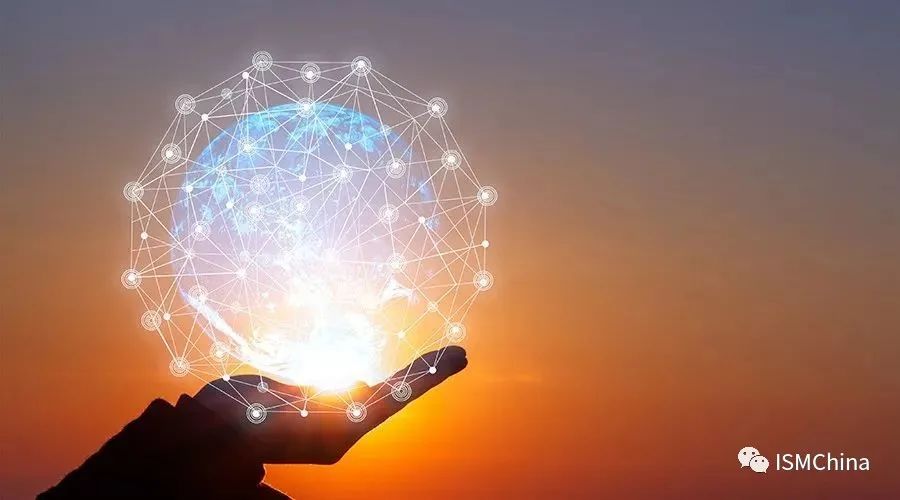
Finally, we have some important digital project insights for you.
- At Schneider, the digital driver is to deliver value to customers; At NIO, digitalization is driven by bringing value to users. Creating value for customers should be the driving force of digitalization, and efficiency gains and cost reductions are the natural results of digital transformation.
- Should successful digital implementations be top-down or bottom-up? Each has its own advantages. Top-down means concentrated advantage, speed, and stronger execution, but it kills local initiative and creativity; Conversely, from the bottom up, local strengths and vitality are fully encouraged, but the advantages of integration are lost. At Schneider we see the perfect combination of the two.
- Contributors or beneficiaries of data? We often hear users complain that they don’t want to use the system because it takes more time to enter data and they don’t really benefit from the data. In fact, users must both contribute data and be able to benefit from it. Among them, a deep understanding of the business, how to analyze and interpret the data is to use the underlying logic of the data.
- When tradition meets digital? Every successful enterprise has its own success story, but in the digital era, these proud of the past may become a hindrance, traditional enterprises may forget the back, strive to move forward, embrace digitalization, and cultivate digital soil and culture, is the proper attitude.
At this point, we concluded our presentation for ISMChina’s Digital Transformation Research at the ISMWorld Global Summit.
Thanks again for the efforts of the project partners, and look forward to our meeting again in the offline platform in the future!
